Author: Jake Huolihan
Yeast blending seems to me to be a largely tertiary topic in the homebrewing community. Commercial yeast manufacturers produce a few blends for styles ranging from Cream Ale to British IPA, as well as the various microbial blends for producing sour beers, but we largely tend to stick to single strains. Perhaps due to our somewhat obsessive nature as homebrewers, particularly us science and process nerds, we avoid blending yeast on our own because it’s an inexact practice at best, making quantification and interpretation of meaningful results difficult.
The popularity of White Labs’ Frankenstout, a beer fermented with 96 different strains of yeast, provides demonstrable proof people are interested blended yeast. While opinions on that beer have been mixed, their experiment made me consider a bunch of aspects about yeast blending, of particular interest to me was the number of strains that could be blended and still produce a good beer. If the yeasts are of a similar origin, I’d imagine many could be used to ferment a beer without much of an effect, but what if the strains are intended for use in different styles?
A couple months ago, a dude named Robb Burden from Southern Hills Homebrew Supply posted on Reddit that he was giving away samples of a yeast blend he made from 59 vials of 25 different strains of expiring yeast. Apparently, rather than toss the lot, he thought it’d be fun to build up a 5 gallon starter with the various strains then dole out the resultant slurry to curious brewers. I jumped at the opportunity and within the week received a couple ice packed vials of yeast with a print-off showcasing the behemoth blend.
I noted 15 of the 25 strains (30 of the 59 vials) were for styles from the UK, while the other 10 were a mix of yeasts traditionally used to ferment American, German, and Australian styles. Even though the blend was dominated by English yeasts, the selective pressures of many months on the shelf in addition to the fact it was initially propagated in a single 5 gallon yeast starter, took a 2,000 mile trip to Denver, then finally re-propagated in yet another starter made me curious if the resulting beer would in fact be dominated by the most prevalent strains.
| METHODS |
Rather than tailor the yeast to my recipe, I thought it’d be best to tailor the recipe to the yeast and decided to base the beer style on my perception of the finished starter. I conservatively guesstimated the vials contained 50 billion cells and made a sufficiently sized starter for a 1.048 OG beer. The starter took off super fast, it was quite milky and aromatic.
After the starter finished and some of the yeast began to settle, I observed generally poor flocculation at this point. With the starter fermented out, I took a few whiffs and noticed what I thought to be a distinctively English aroma, so I took to the task of designing a newly defined beer style I felt would express this character well.
British Golden Ale
Recipe Details
| Batch Size | Boil Time | IBU | SRM | Est. OG | Est. FG | ABV |
|---|---|---|---|---|---|---|
| 5.5 gal | 60 min | 60.0 IBUs | 3.5 SRM | 1.048 | 1.010 | 5.0 % |
| Actuals | 1.048 | 1.01 | 5.0 % | |||
Fermentables
| Name | Amount | % |
|---|---|---|
| Golden Promise | 10 lbs | 100 |
Hops
| Name | Amount | Time | Use | Form | Alpha % |
|---|---|---|---|---|---|
| Fuggles | 43 g | 60 min | Boil | Pellet | 2.7 |
| Nugget | 22 g | 60 min | Boil | Pellet | 12 |
| Fuggles | 43 g | 30 min | Boil | Pellet | 2.7 |
| Fuggles | 28 g | 5 min | Boil | Pellet | 2.7 |
Yeast
| Name | Lab | Attenuation | Temperature |
|---|---|---|---|
| FrankenYeast Blend | 72% | 64°F - 69°F |
Download
| Download this recipe's BeerXML file |
The night before brewing, I collected all of my liquor and ingredients in preparation for the next day’s brew session. My friend Dave came over to my place early the following morning, arriving as the strike water was heating to the proper temperature. Once there, we mashed in and hit the 152°F/67°C we were shooting for.
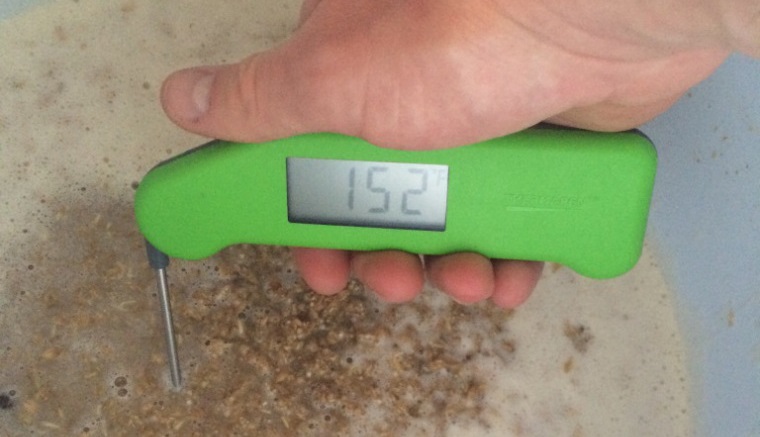
After a 60 minute mash rest, we collected the pale sweet wort using the batch sparge method.
The wort was then boiled for 60 minutes with hops being added at the appropriate times.
Once the boil was finished, the wort was chilled to 70°F/21°C before being racked to a 6 gallon PET carboy. It was at this point I took a hydrometer reading and confirmed we hit our expected 1.048 OG.
I placed the fermentor in my fermentation chamber, hit it with 60 seconds of pure O2, then set the temperature to 68°F/20°C, which we settled on in hopes of accentuating the character from all of the British yeasts in the blend. A check at 12 hours post-pitch showed great fermentation happening.
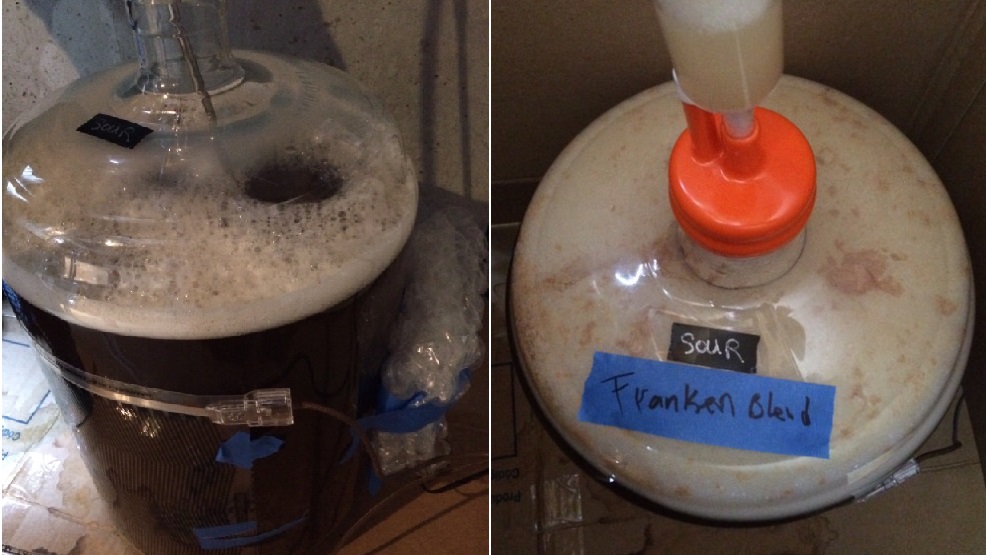
After 10 days, the beer had dropped surprisingly clear and appeared to be done fermenting, so I took a hydrometer reading that showed it had dropped to a respectable 1.010 SG.
I left the beer alone for three more days then proceeded to cold crash and keg it.
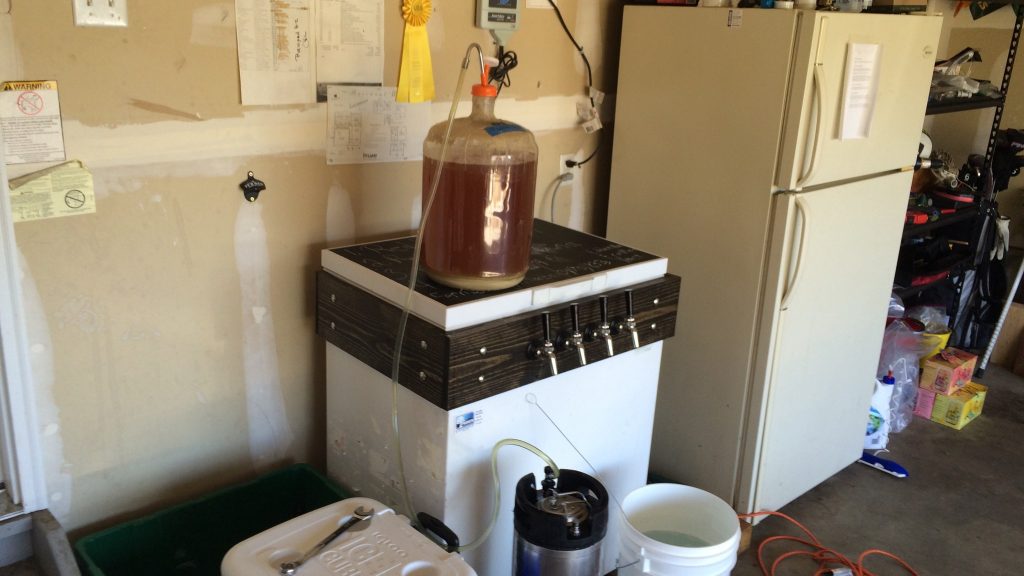
I fined with gelatin in the keg and, after a few days of conditioning in my keezer, the beer was carbonated, clear, and ready to serve!
| RESULTS |
Since this was a single batch intended primarily as a review of Southern Hills Homebrew Supply’s Frankenyeast blend, I didn’t perform a triangle test. Rather, I presented single samples of the beer to a panel of 15 tasters at a Parker Hop-Aholoics homebrew club meeting who were blind to the variable as well as the beer style I was aiming for, and I took detailed notes of their evaluations.
The first topic of discussion centered around beer style, with tasters initially attempting to determine whether it was a lager or an ale. While every taster noted the beer had a very clean character overall, only 10 said they believed it was a lager while the other 5 reported perceiving a slight ester profile that made them think it was more likely an ale.
I then asked the panel to evaluate the beer with a focus on regionality, what country they believed the beer was most representative of. I was surprised with the level of discussion this topic elicited. Of the participants who believed the beer was a lager, 6 felt it was of of German origin, 3 Czech, and 1 American. Of the 5 participants who thought the beer was an ale, all but 1 believe it was of American origin, that outlier being the only taster to say it tasted like a British beer.
Next, I instructed the tasting panel to identify the characteristic of the beer that brought them to their conclusions regarding style and regionality, the component they considered to be the most prominent in the beer. Discussion on this topic immediately went to hops (remember, they knew nothing about the experiment) with most participants noting a prominent flavor of German hops making them think it was from that region. Fewer participants (3) noted a fruity and earthy flavor, which they is why they said the believed the beer was an ale. The general consensus of the group was that the cleanness of the beer caused the hop to be its most noticeable trait. Tasters were asked to rank the hop flavor of the beer on a 1-10 scale where 1 was very weak and 10 was extreme, responses ranged from 2 to 6.5 with a group average of 4.5 overall.
At this point, I revealed that the beer was a single malt recipe with a moderate bitterness level and brewed with a balanced water profile, then I asked the panel what they thought made it unique. A resounding 14 out of the 15 tasters cited fermentation with a clean yeast, while 1 person said they thought a Burton-type yeast was responsible for it distinctness.
Prior to revealing the information about the beer, I asked tasting panel for their thoughts on the quality of the beer, the consensus being that it was enjoyable, easy drinking, very clean, and had a nice grainy flavor.
Finally, I revealed the fact the beer was fermented with 25 different yeast strains coming from 59 vials of nearly expired yeast, the majority of British origin with a few American, German, and Australian stragglers. With the variable in mind, most tasters expressed being fairly astounded with the fact such a blend produced a beer that was perceptibly so clean.
Cheers to the Parker Hop-Aholics members who participated in this tasting as well as The Brew Hut for hosting the meeting in their fantastic new beer classroom!
My Impressions: I wasn’t blown away but this Frankenyeast beer, despite being unlike anything I’d every made before, but it did make for a tasty, easy drinking, warm weather quaffer. It seemed to me the competing yeast strains provided a somewhat muddled experience, nothing terribly distinct about it. I experienced the Fuggles character to be sharper and cleaner than I’ve ever tasted Fuggles before, which was interesting, and I personally perceived noticeable English esters in addition to a weird smoky malt thing I’ve only ever tasted in Scottish beers. And yet still, strangely, there was an overall cleanness to this beer that seemed to tie it in a bow. From what I know about beer, these flavors wouldn’t seem to go together at all, but something was there in the background that actually drew them together to create a drinkable beer. Definitely not amazing, but not a dumper either. Like some of the tasters on the panel experienced, the Fuggles hop stole the show with this beer, standing out among the background of what I believed was a surprisingly subtle yet complex yeast character.
| DISCUSSION |
I have no way of knowing what strain, if any, dominated during fermentation of this beer or if the 25 different strains worked in harmony with each other. The fact a majority of the tasters thought this beer was a German lager seriously had me wondering if my knowledge of the yeast blend had clouded my ability to evaluate this beer. Immediately after the panel’s evaluation, I poured myself a pint for a reassessment, this time thinking of it as a pale lager. Sure enough, I noticed what they were referring to, almost as if my expectation of English esters biased my perception.
In the time I had this beer on tap, Olan Suddeth from Brew United released his review of an IPA he made using Frankenyeast and noted it as imparting “incredibly unique” character to his beer. This wasn’t necessarily my experience with it, but it made me wonder the extent to which variability plays a role in yeast blending. Of course our different experiences could also be a result of the disparate styles each of us chose to brew.
Blending yeasts is indeed a complex task and I’m compelled to believe brewers have settled on using single strains for a reason. While I enjoyed the beer I made with Frankenyeast and would certainly jump at the chance to try other types of yeast blends, it did leave me wanting for something more. That’s not to say it wasn’t complex, it was, just in a sort of unusual way. I trust that if appropriately harnessed, the combined flavors contributed by different yeasts could be an amazing tool in a brewers belt. But I won’t be the one doing the harnessing, too much effort, though I anticipate hearing about new blends that arise due to the experimentation of others.
Support Brülosophy In Style!
All designs are available in various colors and sizes on Amazon!
Follow Brülosophy on:
FACEBOOK | TWITTER | INSTAGRAM
| Read More |
18 Ideas to Help Simplify Your Brew Day
7 Considerations for Making Better Homebrew
List of completed exBEERiments
How-to: Harvest yeast from starters
How-to: Make a lager in less than a month
| Good Deals |
Brand New 5 gallon ball lock kegs discounted to $75 at Adventures in Homebrewing
ThermoWorks Super-Fast Pocket Thermometer On Sale for $19 – $10 discount
Sale and Clearance Items at MoreBeer.com
If you enjoy this stuff and feel compelled to support Brulosophy.com, please check out the Support Us page for details on how you can very easily do so. Thanks!

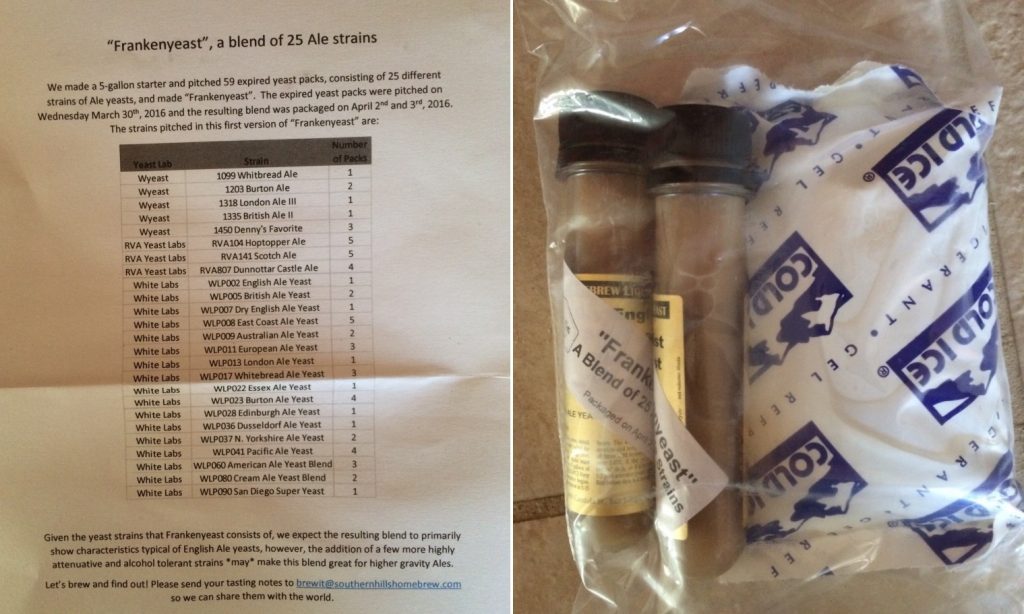
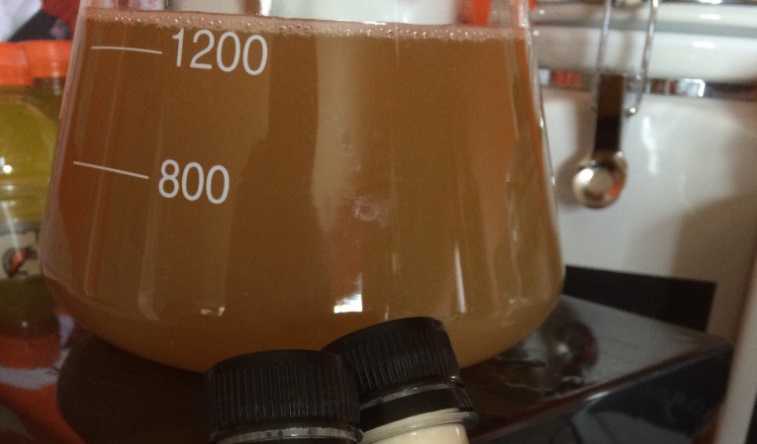
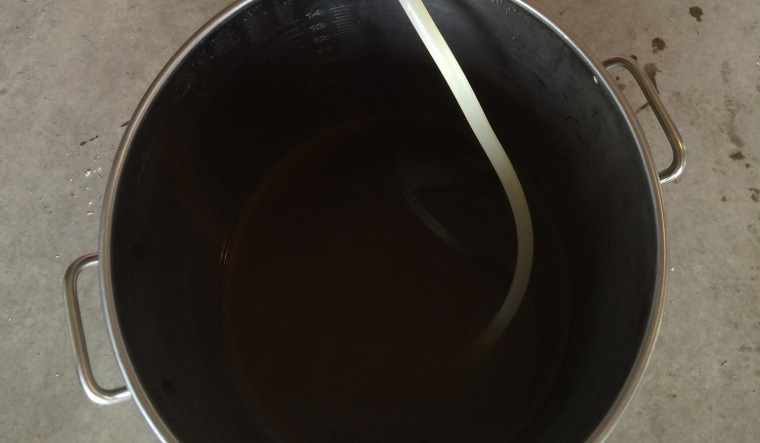
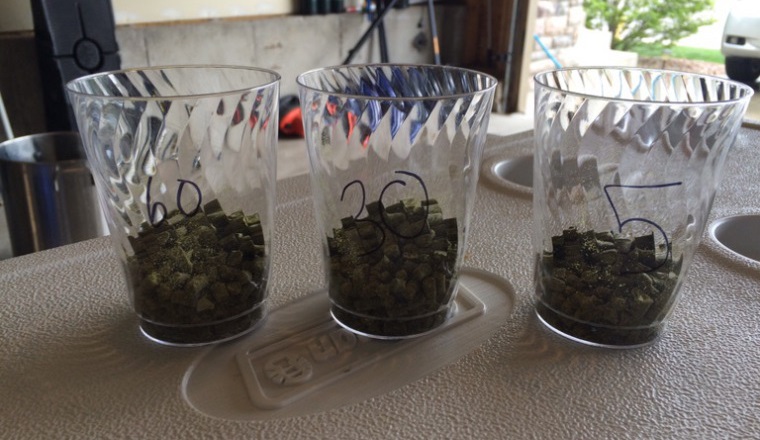
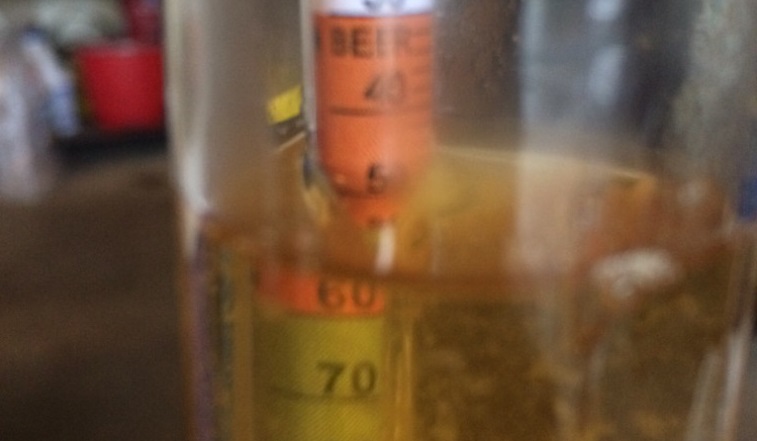
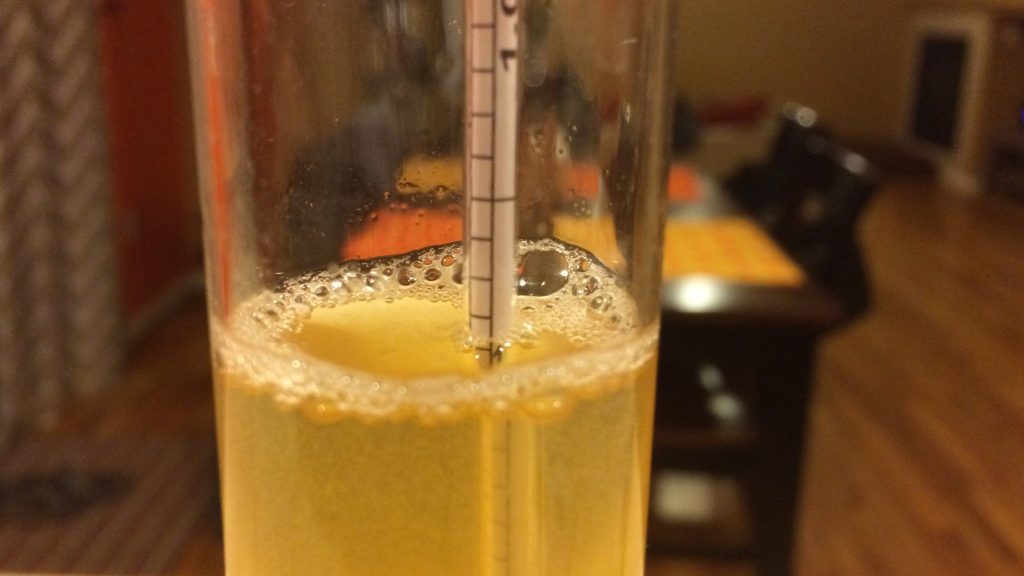
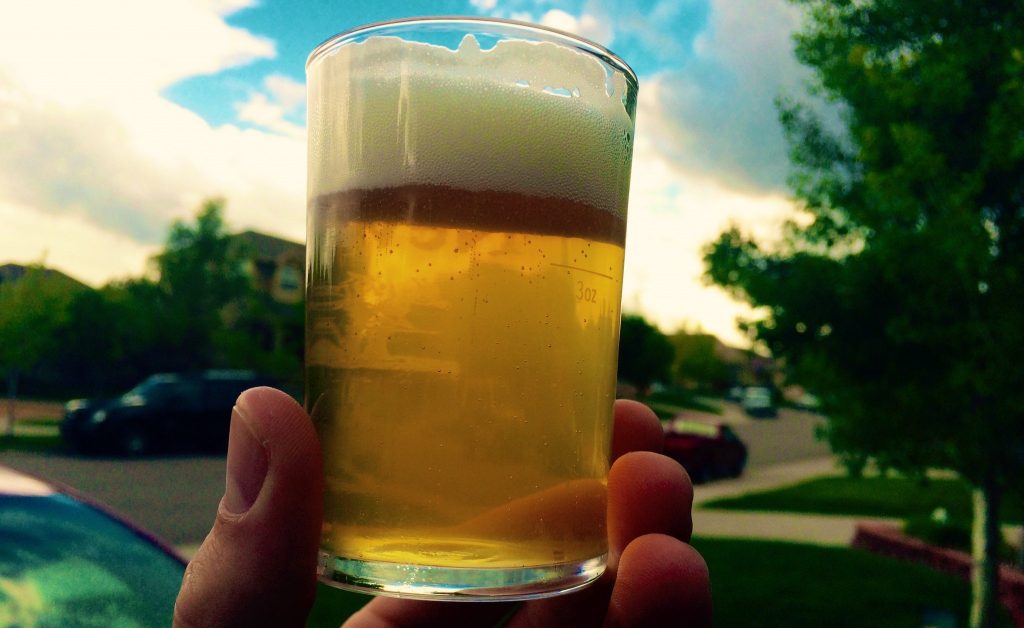










5 thoughts on “Frankenyeast Beer: Blind Tasting Results”
Seems like a fun trial run…would you ever think of blending same-style strains to make a beer ‘unique?’
This beer definitely got me thinking more about trying that. Knowing what we know about 34/70’s temp range I wonder if pitching a pack of that and a pack of 05 together would give you many of the characteristics of a lager but ferment in like 4-5 days super clean. I guess this is what the cream ale blend probably is.
I used-as-guidance a mixed Saison yeast recipe from Beer & Brewing Magazine to make a no-chill, no-refridgeration Saison that used three different yeasts at different times. Certainly gave it a unique funk and flavor, but I can’t say how different it was as to a control you’d need to test it against the same done with three singluar yeasts…even I don’t have the headspace and time for that. Bit of an investigative conundrum.
I suspect blending lots of finished beers would give the same end result: a bland, generic beer flavour lacking any distinctive character. Perhaps this, along with the pale colour and absence of crystal, was why the beer was thought to be a lager.
know I understand when they say for you to take care of your yeast and to make sure that you keep some to make beer and grow some more yeast